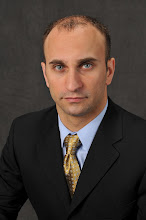How-to: Record a video interview
How-to: Record a video interview
Here are some tips for recording a video interview. I am putting these 'to paper' so I won't forget - and maybe they will help someone else later. Many thanks to Whitney Dow (of When the Drum is Beating) and Ramon Fabregas from Talamas in Boston.
- Set up dedicated microphones - lav mikes for your subject and for yourself. Don't rely on the built-in mike in your video recorder. Dedicated mikes make a world of difference, and they are not expensive to either rent or purchase.
- Use proper lighting. Something as seemingly insignificant as a backlight makes a dramatic difference. Don't rely on room or outdoor lighting. Even if you are recording during the day when you have some outdoor lighting, it's better to close the curtains if possible and use artificial lighting instead. Here's a really nice overview of a lighting setup, I won't duplicate that here. Not only can you control and compensate for the color temperature, but you won't have to deal with changes in lighting, because:
- Your interview environment needs to stay consistent. The interview conversation, if it's going well, might take a meandering path with detours, side bars and dead ends. When you are editing it afterwards, cutting and reordering parts of it, you don't want changes in the environment - subtle as they may be in real time, to become jarring and sudden in the edited version. That means keep lighting consistent. Don't have other objects in the shot. You may be tempted to talk over a cup of tea - resist the temptation. What you don't want to see in the final version is a tea cup mysteriously jumping around the table. Give your subject a drink break if you feel that necessary (keep the video rolling). By the same token, don't have a clock visible in the background either.
- Give yourself plenty of time. Lighting and A/V takes a while to set up and test. I think it took me about an hour to set up lighting the first time around; once I marked all the locations on the floor with blue tape (another tip) and was familiar with the equipment, it still took about 30 min to set up and plug everything in.
- Unless you can be absolutely sure that you can edit the interview into a narrative later, I suggest you have a camera on yourself in addition to your subject. This way your questions don't seem like they are coming from some disembodied voice. If your seating setup is one where you sit side by side with your subject - maybe less formal but works well - one camera can capture you both. If you sit opposite your subject, make sure the camera that's covering you doesn't have your key light in the shot. It's totally fine if some of your video equipment makes into the shot of you.
- Prepare for your interview. Have questions ready, but don't allow the conversation totally driven by them. Don't think ahead to your next question while the subject is answering the previous one; be in the question.
- Before you start asking the questions you really want to talk about, talk about other things. Ask some general questions or talk about something non-stressful. It takes people a while to relax when they are on camera.
- Ask open ended questions. When the subject finished answering, leave a pause - they will sometimes think of something else to say. It's amazing how many times I can identify this 'trick' in other people's interviews now.
- Lighting and audio can be pretty inexpensive to rent. I rented four lights, two mikes and a mixer for the weekend for about $100 at Talamas in Boston. Video camera rental cost me the same from another vendor in Newton. I later found out that I can purchase the same camera for $200.
That's it. Now I don't need to keep this in the back of my mind


0 Comments:
Post a Comment
Subscribe to Post Comments [Atom]
<< Home